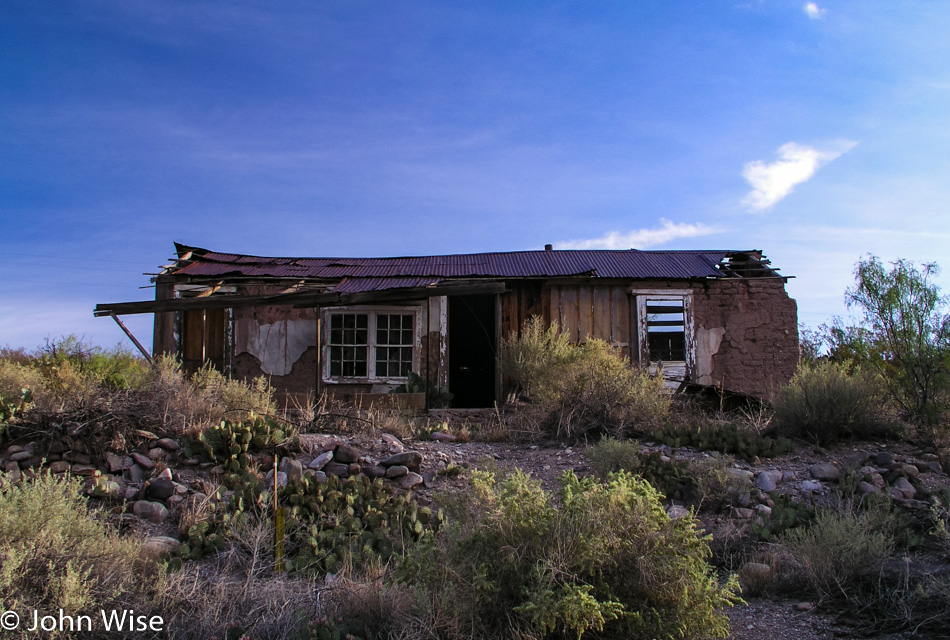
The Puebloans built something a thousand years ago over at Chaco Culture, and it’s standing up better than what my ancestors built 100 years ago.
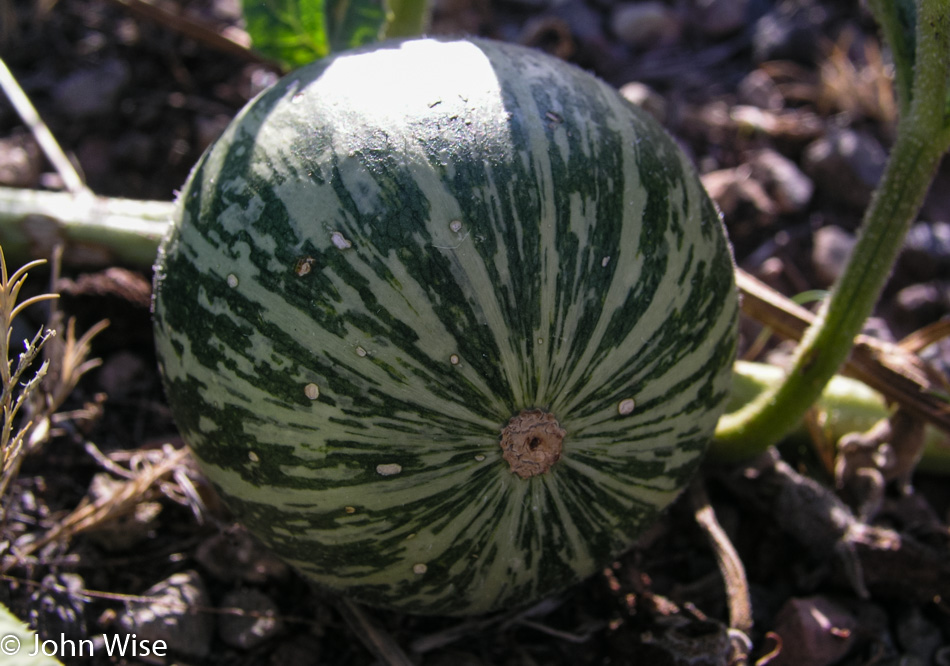
Then there’s nature that, with great fidelity, keeps duplicating the plants and animals along with the conditions that support the life found on our planet, except we humans who are part of this force are using our “intellect” to crush those systems where we can.
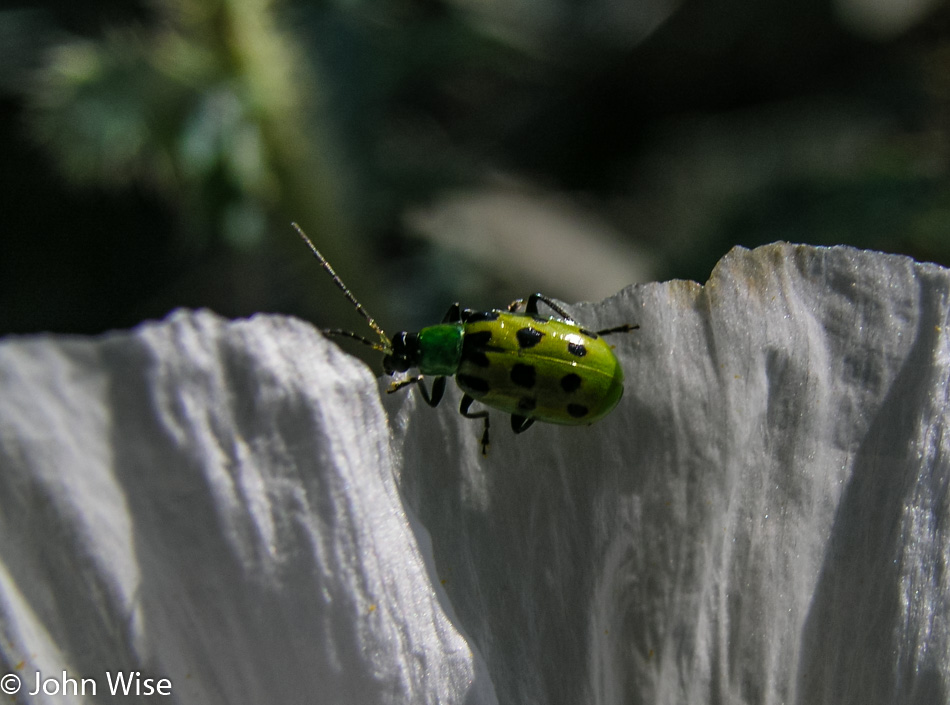
Oh, look, it’s a spotted cucumber beetle.
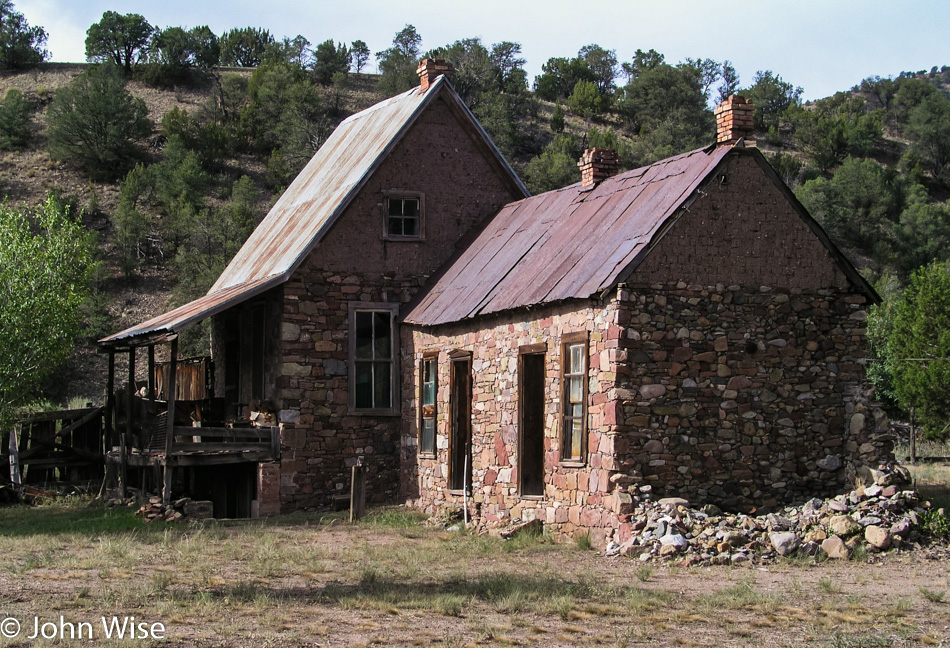
Welcome to Doodle Dum, as it has been named by its most recent inhabitant, Cassie Hobbs. This somewhat peculiar home in Chloride, New Mexico, was built in 1921 by Austin Crawford who designed it to withstand the hail god was going to send to earth. Fortunately for Mr. Crawford, that day never came, but the town of Chloride started to disappear off the map until nothing much more than a ghost town existed. This remote corner was certainly worth a visit, we only wish the Pioneer Store Museum had been open while we were in the area.
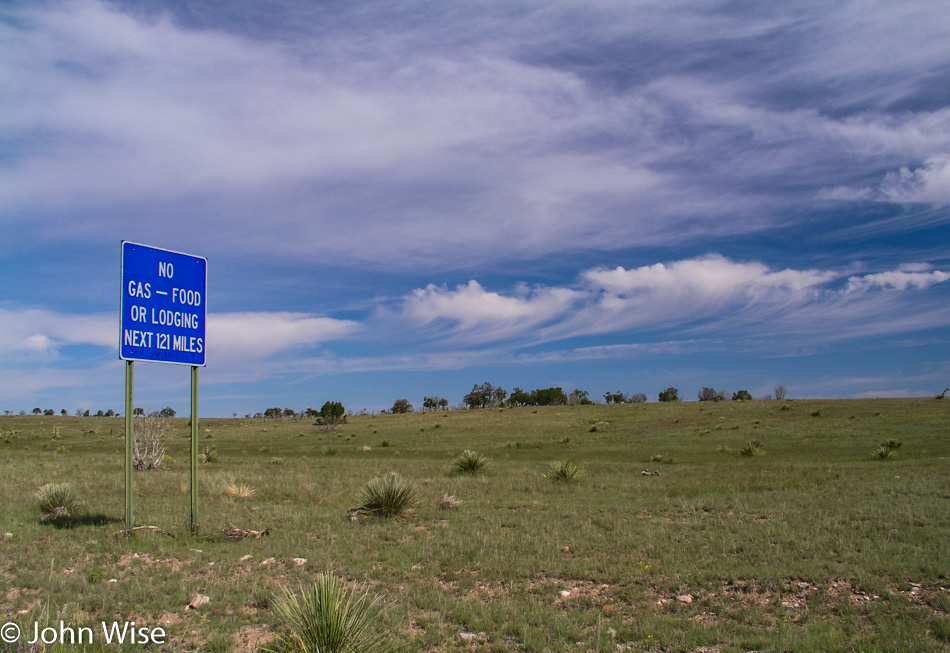
This promised to be a vast stretch of nature untouched by humans aside from the road that is cutting through it; hopefully, we’ll have enough gas. Just up the road, and lucky for us, not 100 miles up the road, there was a crew doing road repairs and said the road ahead was impassable. Well, that changed our plans of heading back to Arizona via this mountain route on Highway 52.
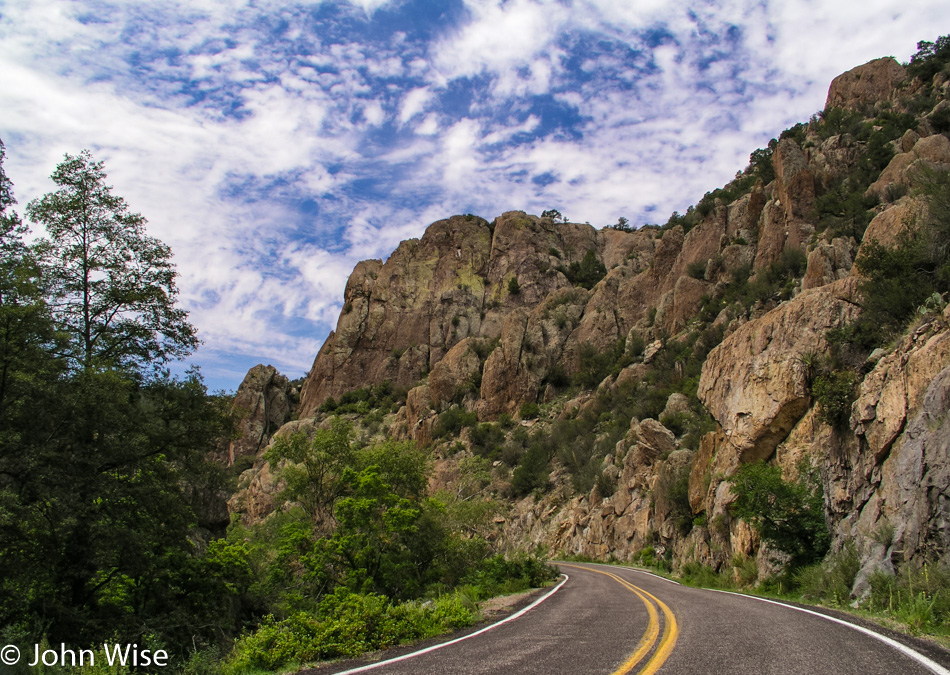
So instead, we turn around and aim for the 152 West.
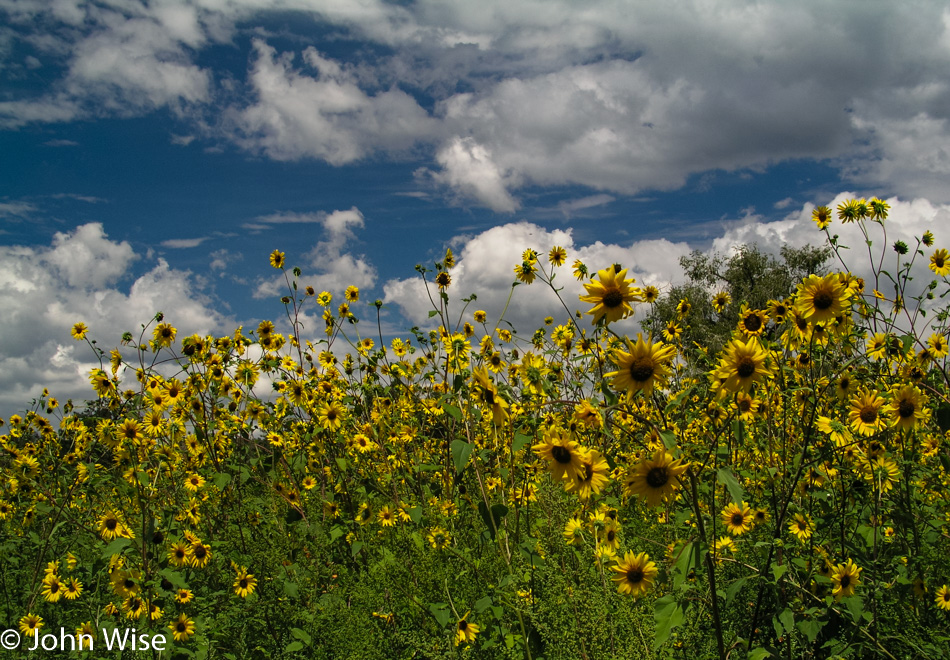
This isn’t bad, and there’s a detour ahead we can take.
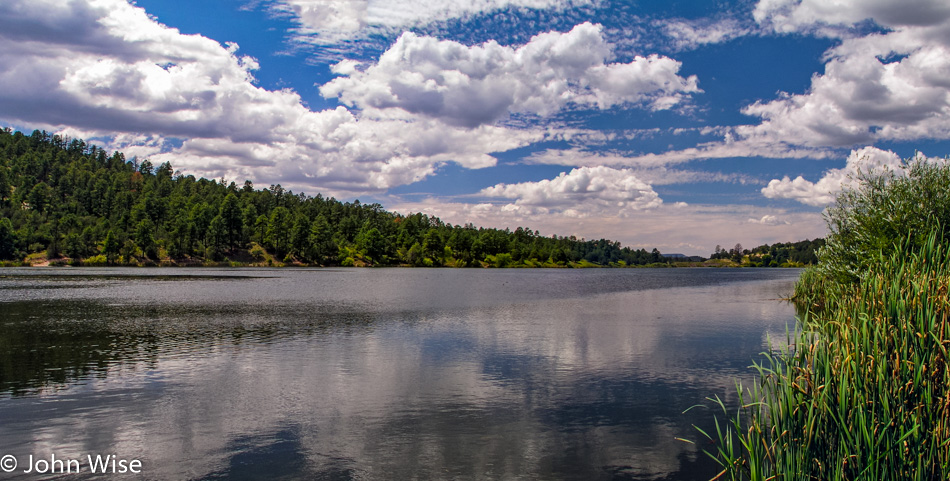
Lake Roberts is a nice lush corner of New Mexico, but we’re just passing through.
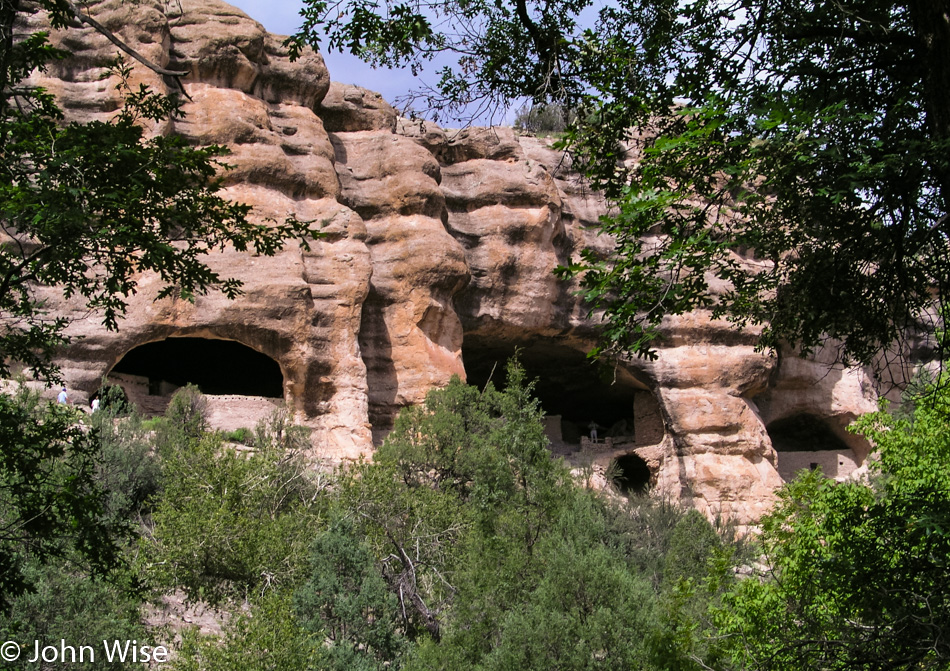
Our destination is the Gila Cliff Dwellings, which are part of the National Monument that bears their name. These homes were part of the Mogollon People’s lands that started just north of here and included most of the Mexican state of Chihuahua. Like so many other tribes of the Southwest, they abandoned their place here next to the Gila River and moved on.
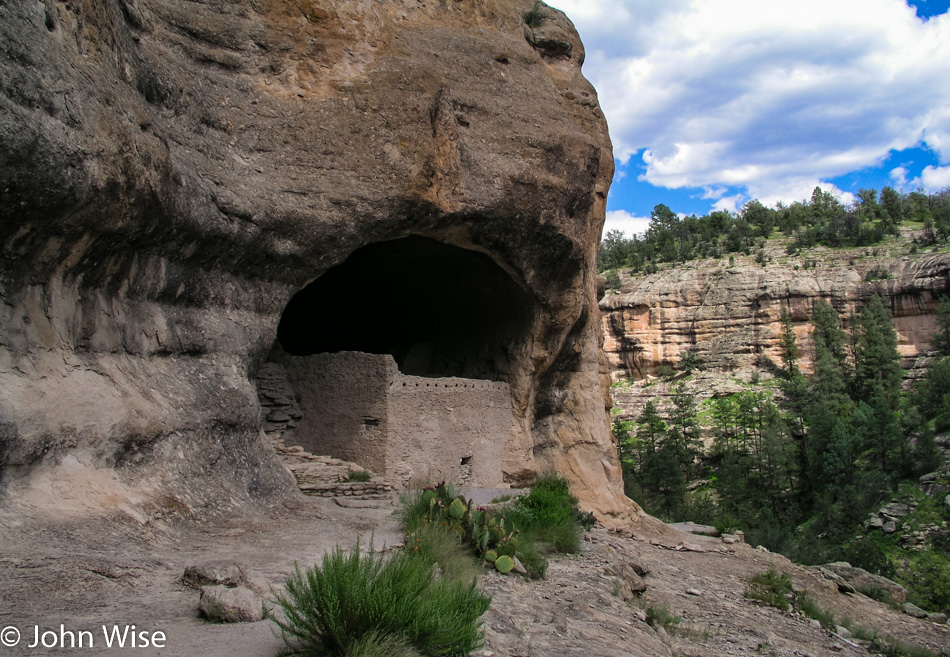
Oral tradition among tribes, including the Acoma, Hopi, and Zuni, says the Mogollon integrated into their societies.
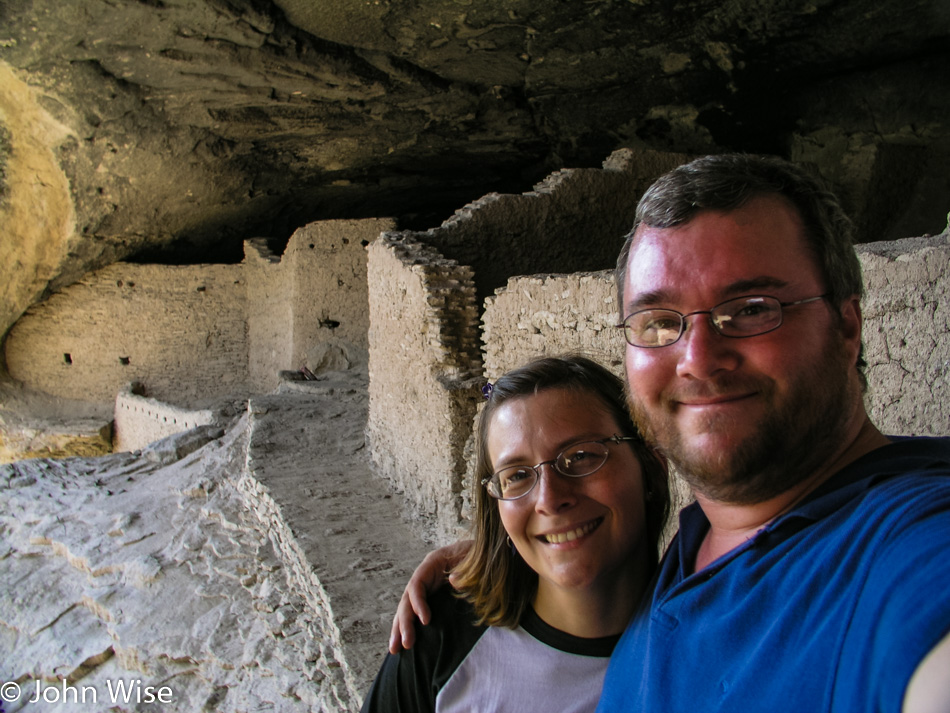
It’s great that these are now protected lands, but one hundred years ago, they were being pillaged by hunters, farmers, and people collecting artifacts, including human remains in the form of mummies. Caroline and I are leaving with memories of one of the more remote parks in the U.S. National Park system.
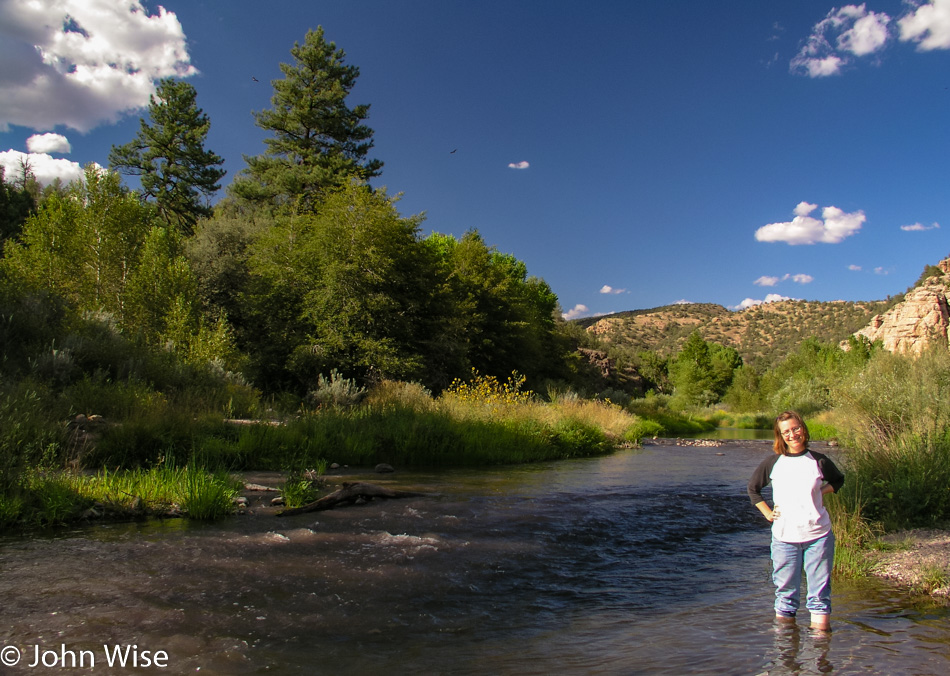
Of course, Caroline had to doff her shoes and roll up her pants before stepping into the waters of the Gila River. One day, I’ll have to compile a list of how many of America’s major bodies of water and waterways she has dipped her toes into.
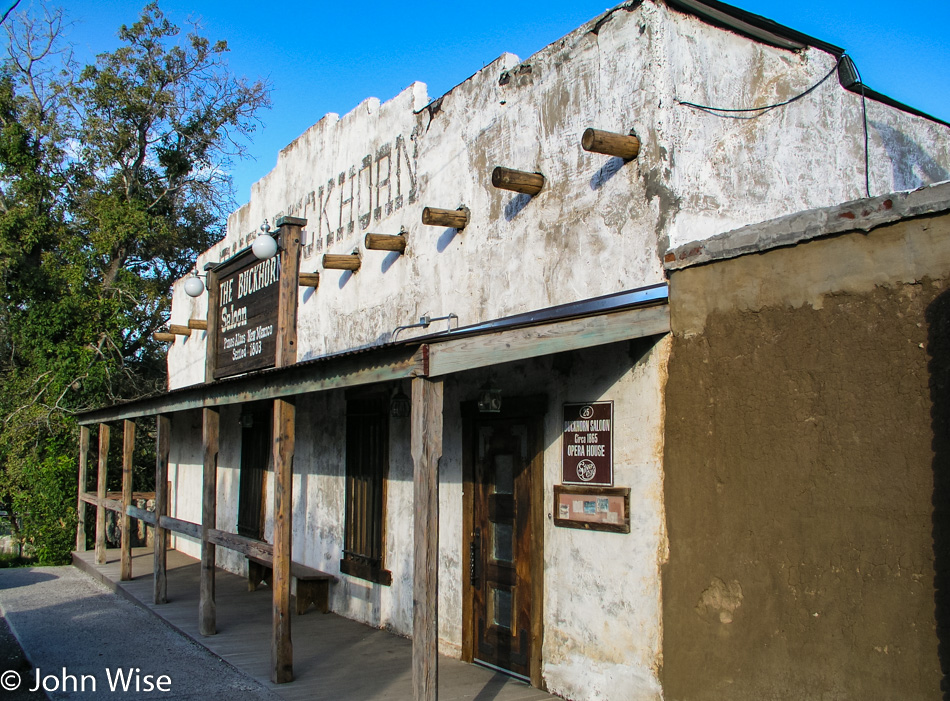
Our last stop before finally driving home on this five-day journey into the Southwest is in Pinos Altos, New Mexico. Someone we know hails from this small town that is trying to become a ghost town these days with a population of a couple of hundred, down from about 9,000 back in the 1880s when gold was being mined in the area.
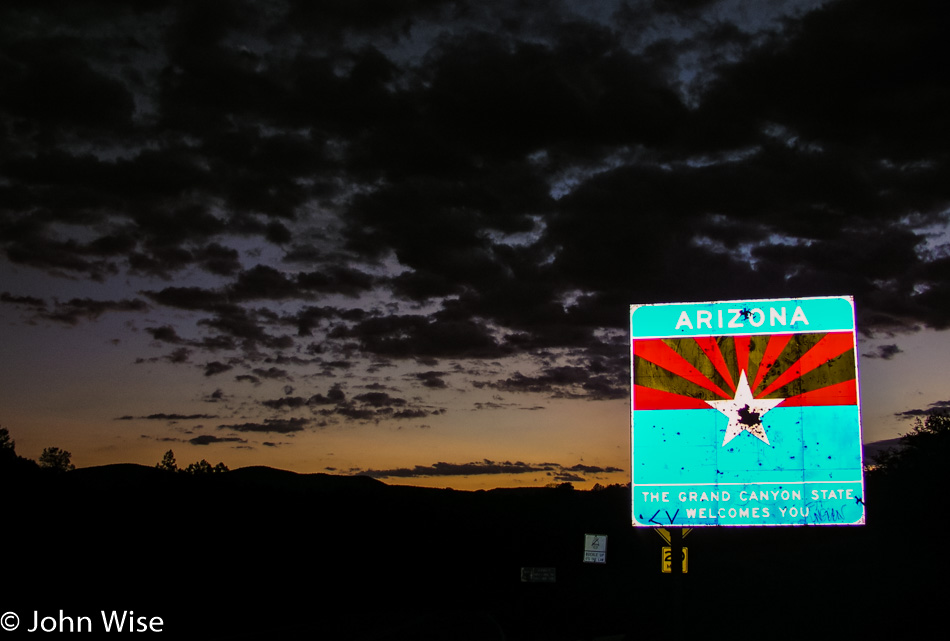
What kind of people drive by a state sign and have to stop to shoot it? Maybe people like us in some way who have to stop and shoot it with a camera, a way of saying, “I’ve been here.”